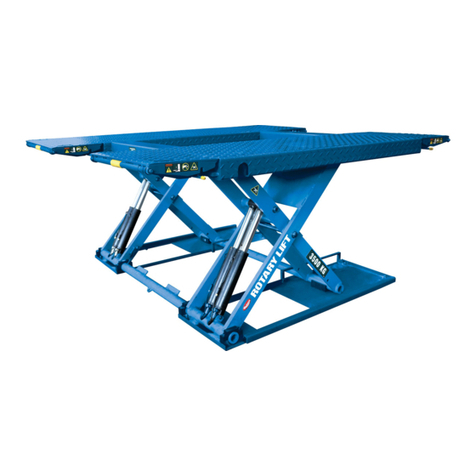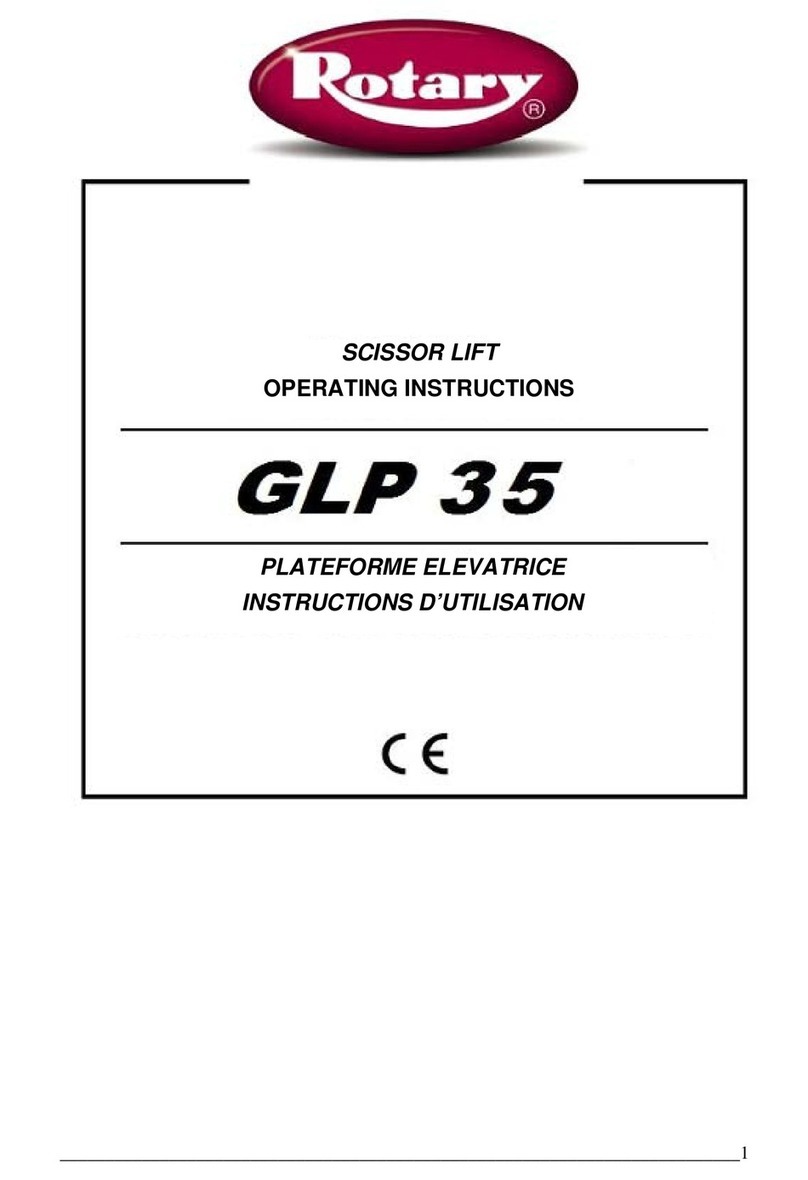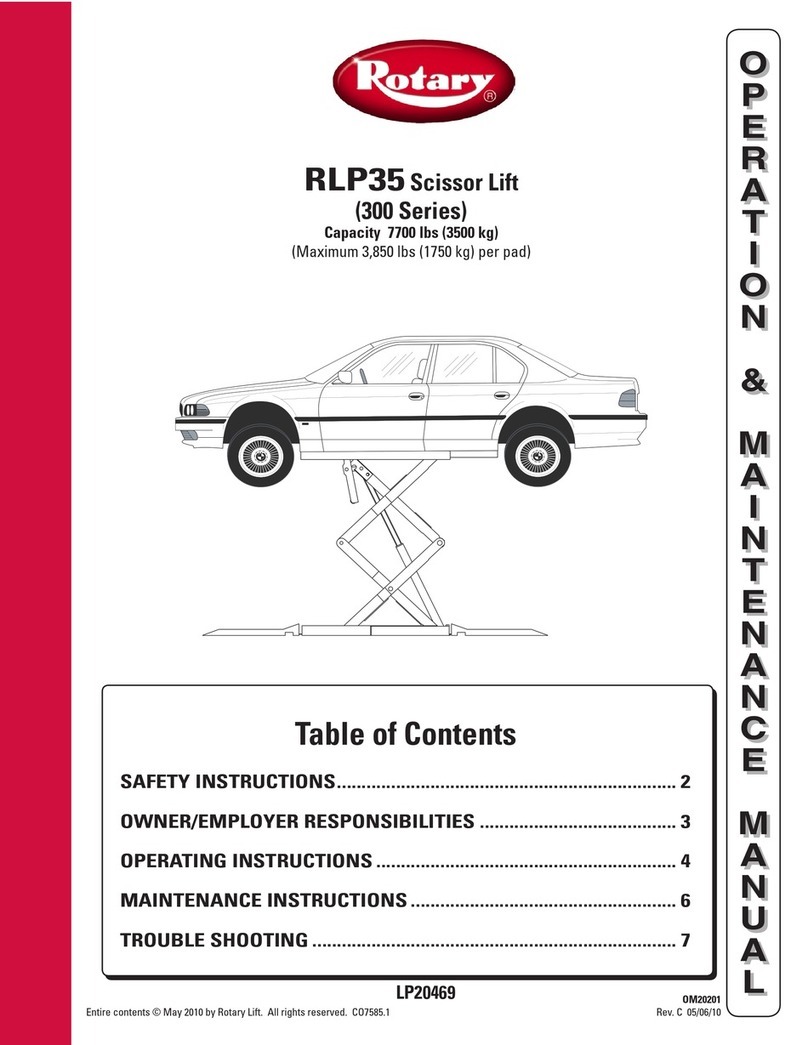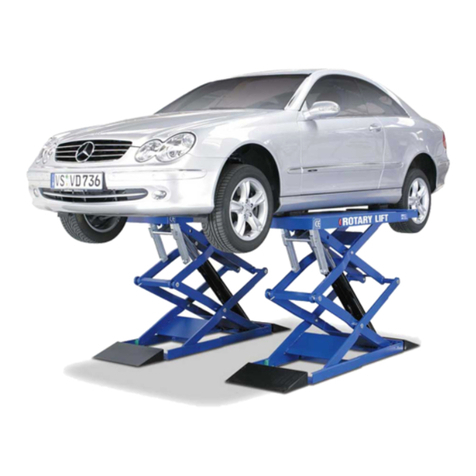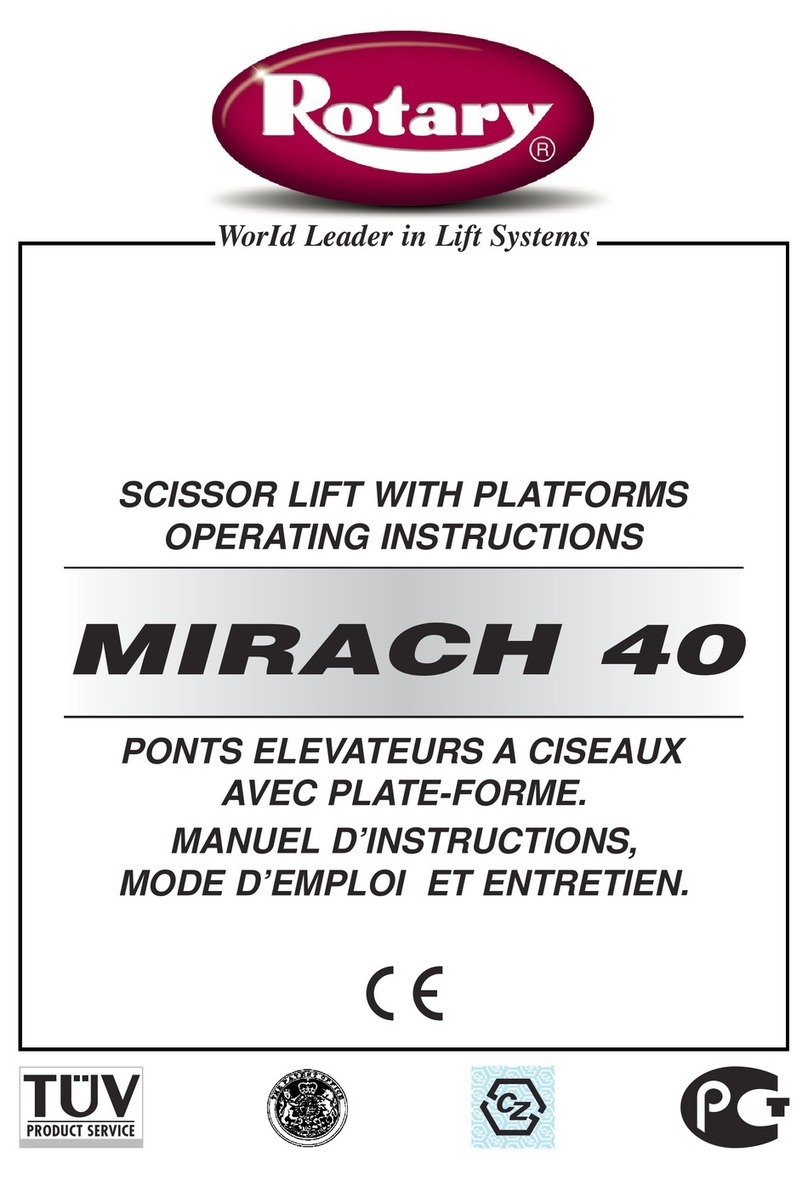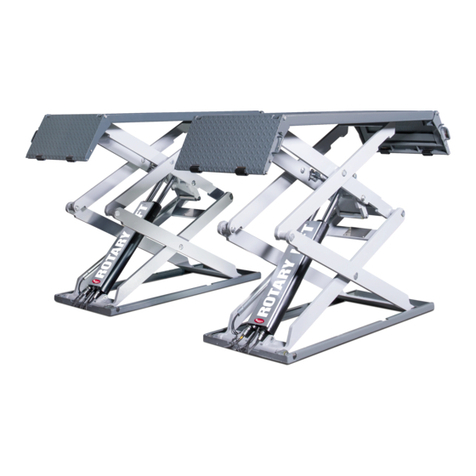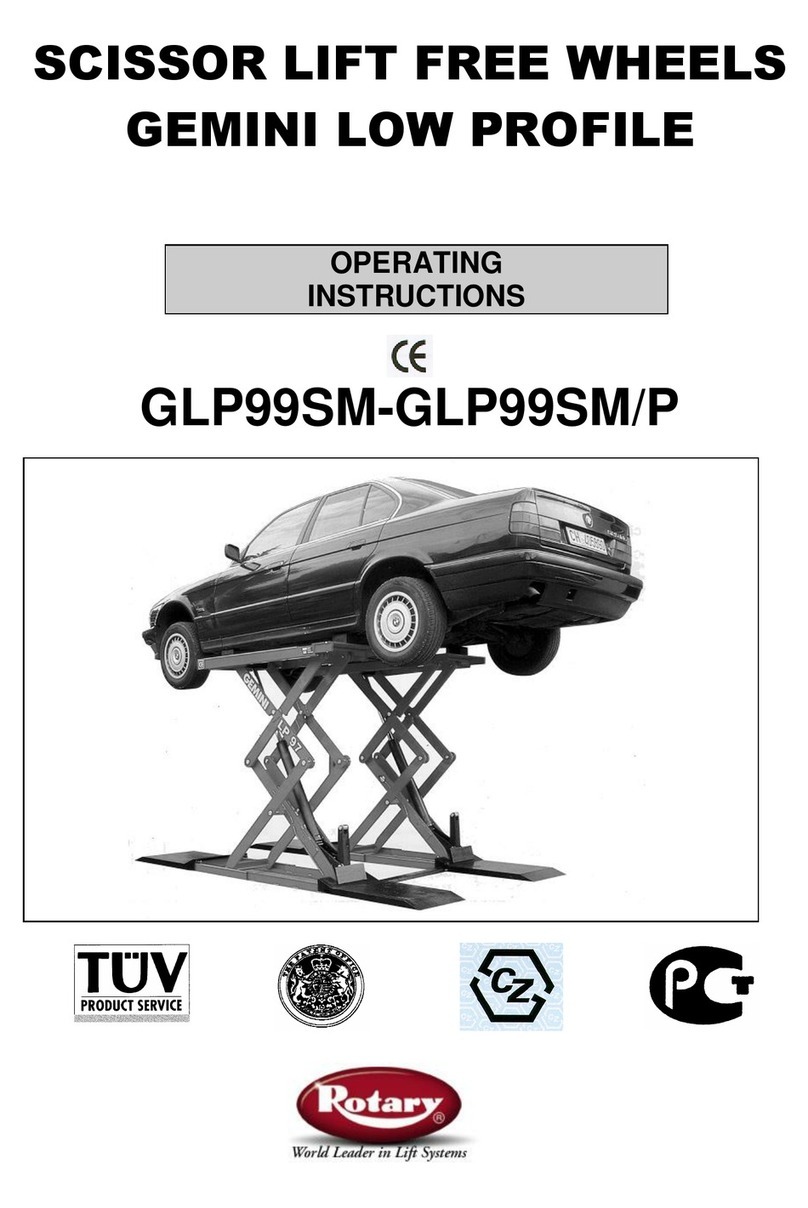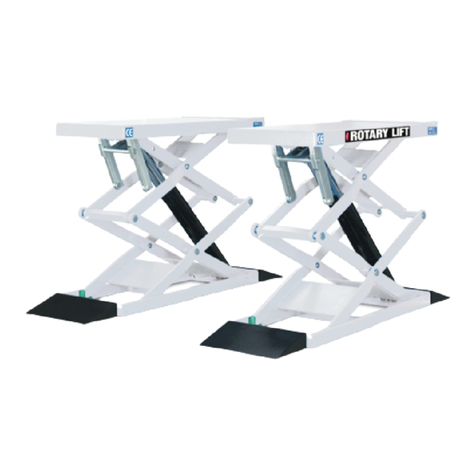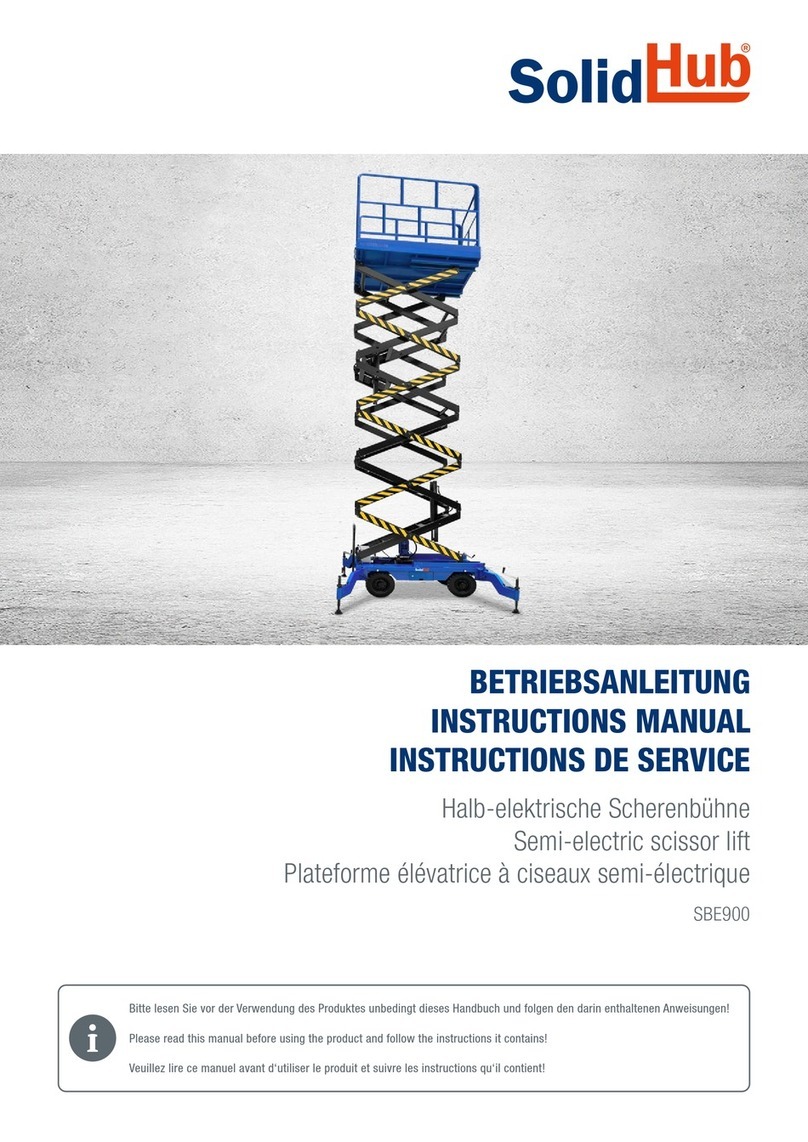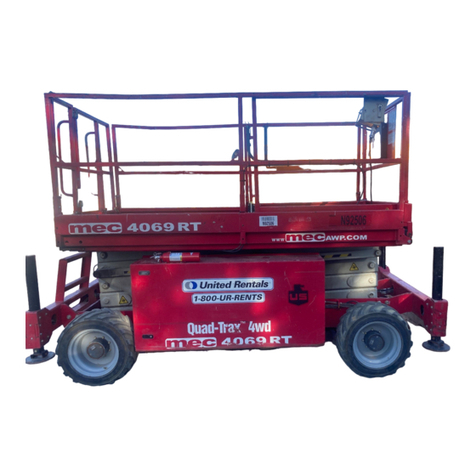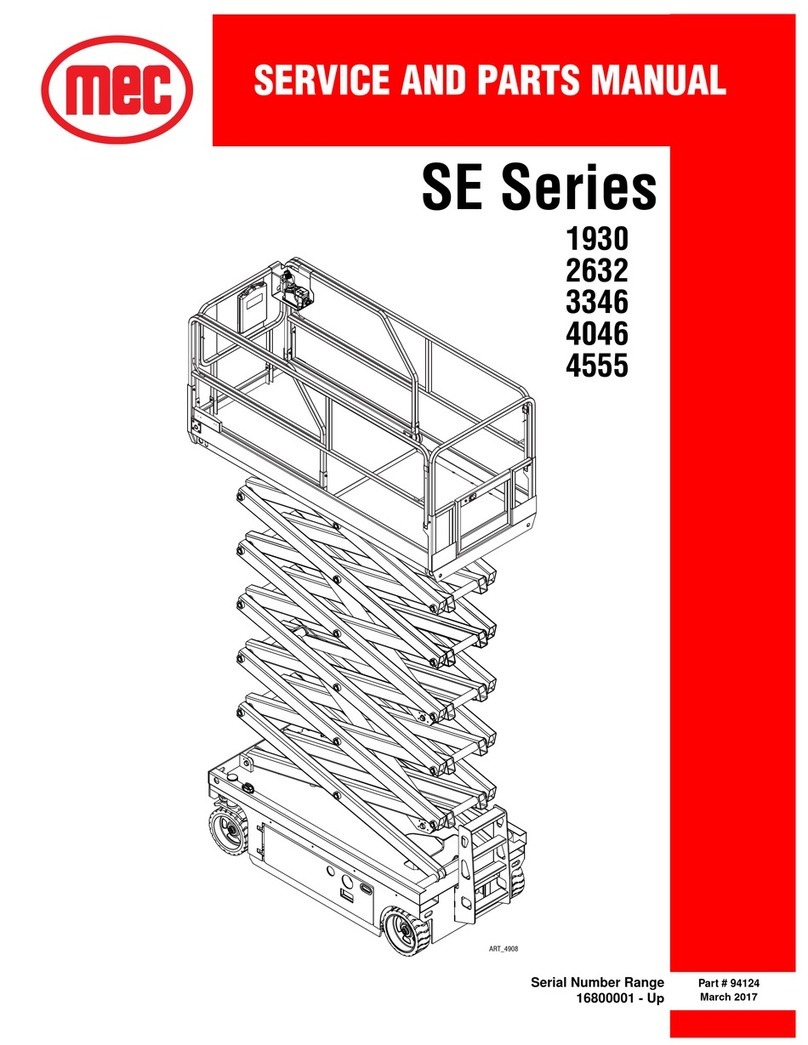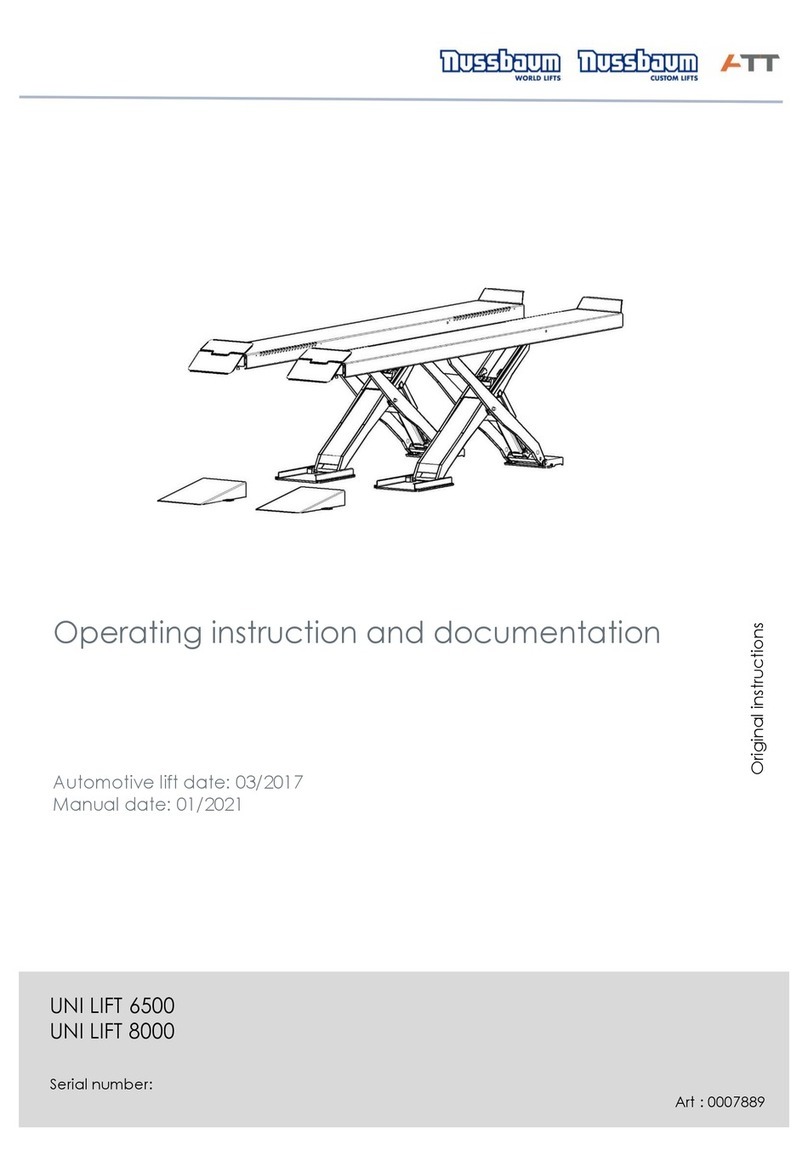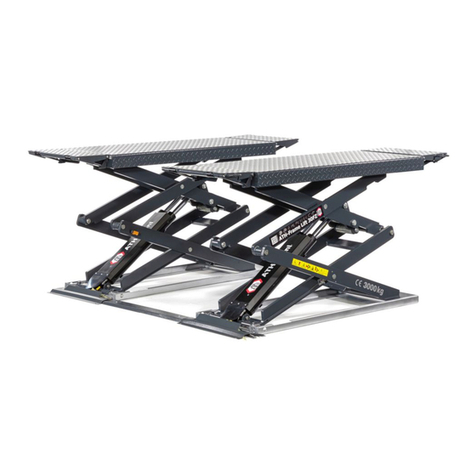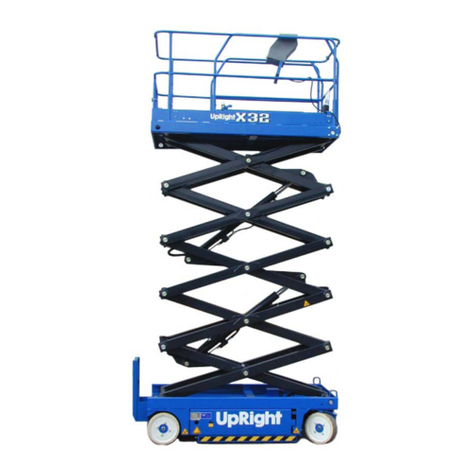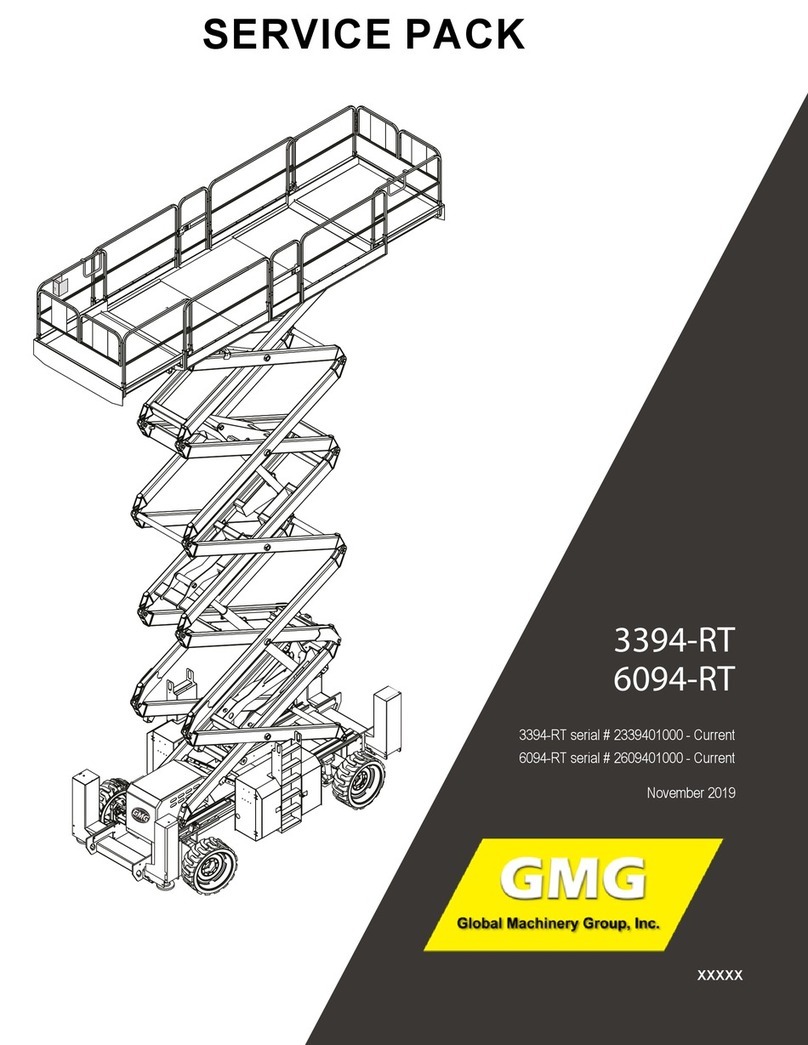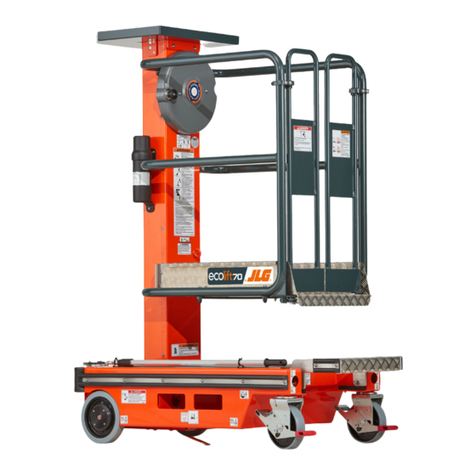
4
3.2 Lifting unit
It is composed of four hydraulic cylinders
connected by rigid and flexibles tubes.
The lifting unit is controlled by an electric
panel placed on an electric cabinet (5) containing
the hydraulic unit.
3.3 Safety devices
The safety devices are composed of:
•
double, hydraulic circuit
•
two safety solenoid valves
•
flow control valve adjusts descent speed
•
automatically activated micros witch stops
descent travel thus acting as foot guard
•
Flow control valve just in case the hose broken
3.4 Intend use
The scissor lift may only be used:
•
In indoor areas for lifting unoccupied motor
vehicles.
•
For lifting vehicles with a max. load capacity of
3000KG
•
If the weight is distributed correctly. By default,
the load should be centered in the direction of
motion. If the main load (e.g. engine) is however
at the front or the back, the following applies:
at front max. 3/5,
at back 2/5 of load or vice versa.
•
With correctly aligned, adjustable runways. The
vehicle must be approximately centered on the
two platforms.
•
In accordance with the technical data in
Chapter 4, in technically sound condition.
3.5 Incorrect use, incorrect behavior
Incorrect behavior presents a residual risk to
the life and health of the people working in the
lift area.
The manufacturer assumes no liability for
damage resulting from use other than the
intended purpose and from incorrect behavior.
The following is prohibited:
Figure 5
Climbing onto or riding on the scissor lift or
the load.
Lifting when there are people in the vehicle.
Lifting/lowering when people or animals are
in the danger zone, in particular below the
lift.
Jerky lifting or lowering. Do not cause the
lift to vibrate.
Throwing objects onto or under the lift.
Lifting a vehicle at the incorrect pick-up
points.
Lifting a load on only one platform of the lift.
Lifting vehicles containing hazardous goods.
Operating outdoors or in workshops at risk
from fire or explosion.
Washing cars on the post lift.
Modifications of any kind
3.6 Internal accident, health and
safety, and environmental information
This operating manual does not include the
operating instructions which need to be drafted
by the user of the scissor lift.
The internal operating instructions regulate
actions within the company for the prevention of
accidents, and risks to health & safety and the
environment.
These also include actions in the case of an
emergency, first aid measures etc.
5
BQ-144
1800
KG
1200
KG
Maximum Axle Load Distribution
No anchors ,prohibited distribution
Heavy
End Light
End
